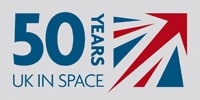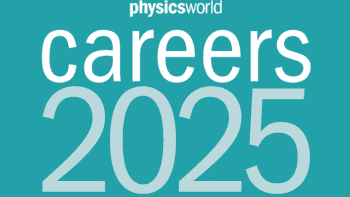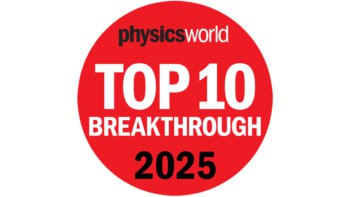By James Dacey

Today is being heralded as the 50th anniversary of the UK in space. That is because on 26 April 1962 the Ariel 1 satellite was launched, marking the nation’s first step into the final frontier and making it the world’s third space-faring nation. The Ariel 1 mission also signified the world’s first international space mission – while the mission carried six scientific experiments designed and built by UK space scientists, the satellite itself was built and launched on US soil, by NASA.
This bilateral mission may come as a surprise, because the space race of the 1960s is usually seen as a two-horse affair between the US and the USSR. The collaboration between the UK and the US resulted from the Eisenhower administration’s 1959 offer to launch allies’ space-science instruments, free of charge, on US rockets.
Of course, it was indeed the two superpowers, acting unilaterally, that reached the two most significant milestones of the space race. The Soviets had stunned the Americans when Yuri Gagarin became the first person in space in 1961. But a generation of US national investment paid off when Neil Armstrong took that first small step on the Moon in 1969.
Today, space exploration is no longer the domain of just two superpowers. Many other nations have space programmes, and satellites have been launched by more than 50 nations – everyone from Italy to Israel, via Morocco and Mauritius. The space industry has also matured, with the majority of space missions now take place for strategic or commercial purposes, such as launching global positioning satellites and instruments to collect environmental data. Space missions are also no longer carried out exclusively by national agencies; an increasing number of private enterprises are starting to invest in the space industry.
Looking to the long-term future of space exploration, there have been murmurings of a return to the Moon or even a manned mission to Mars, linked with both NASA and the China National Space Administration (CNSA). But many commentators have noted that without the “simplicity” of the political situation in the 1960s, it will be hard to generate the incentive to pour vast amounts of national money into expensive manned missions. And given the ongoing global financial crisis, the prospects for state-sponsored manned missions to space is unlikely to improve any time soon.
But those with a Promethean view of the space industry will be confident that humans will one day resume manned exploration of space. And when we do, who will be in the driving seat? In this week’s Facebook poll, we want you to let us know how you think this quest will continue.
Which of these is most likely to reach the next significant milestone in manned space exploration?
The US
Russia
An emerging space nation such as China or India
An international collaboration
A private company
Have your say by casting your vote on our Facebook page. And feel free to post a comment to explain your choice or to make an alternative suggestion. You can also read how US astrophysicist and science popularizer Neil deGrasse Tyson makes the case for space exploration in this recent interview with physicsworld.com.
In last week’s poll, we looked at a topic close to the hearts of many condensed-matter physicists. We asked you to select your favourite quasiparticle from a list of five. The most popular, picking up 48% of the vote, was the phonon. Others opted for the hole (19%), the spinon (14%), the exciton (13%) and the wrinklon (7%).
Given its amusing name, several people actually questioned whether the wrinklon is a real particle, including Facebook user Heather Williams, who legitimately asked “Is there really such a thing as a wrinklon? It sounds like some nonsene they’d put on anti-aging cream.” But despite its name, I can confirm that the wrinklon does exist, at least according to these physicists, who described the new quasiparticle in a paper published last June in Physical Review Letters.
Thank you for all your participation and we look forward to hearing from you in this week’s poll.


